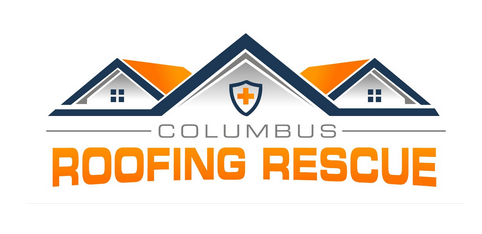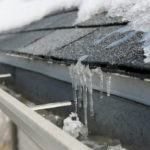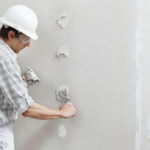
How To Climb A Ladder the Safe Way
Climbing a ladder is a task that most of us perform regularly. However, it’s also one of the most dangerous activities we can do, with thousands of accidents occurring each year. These severe accidents can lead to injuries, hospitalizations, and even fatalities. Therefore, knowing the dos and don’ts of climbing a ladder is essential to ensure your safety.
This comprehensive safety guide will cover everything you need to know to stay safe while using a ladder. From choosing the right ladder for the job to maintaining three points of contact, we’ll provide you with important tips and tricks to avoid ladder-related accidents and injuries.
Ladder Safety Statistics
You might want to think twice before you get the ladder out to inspect your roof or gutters. Ladder accidents are more common than you may think. According to the (OSHA) Occupational Safety and Health Administration, over 150,000 ladder-related injuries occur annually in the United States alone. Of these accidents, 97% occur outside of the workplace. Falls from ladders are one of the top causes of fatalities in the construction industry, accounting for about one-third of all fatal falls. These statistics highlight the importance of ladder safety and the need to follow proper ladder procedures.
Understanding Ladder Types
Before learning about ladder safety, it’s essential to understand the different types of ladders available. Ladders come in many shapes and sizes, each designed for a specific use. The most common ladders are step, extension, and leaning ladders.
Step Ladders
Step ladders are self-supporting ladders with two front legs and two rear legs. They are ideal for indoor use, such as changing light bulbs or accessing high shelves. Step ladders are available in various sizes, from small, two-step ladders to large, eight-step ladders.
Extension Ladders
Extension ladders are the straight ladder that extends in length, and they come in various sizes and can reach heights ranging from 20 to 40 feet. Extension ladders are ideal for outdoor use, such as cleaning gutters or painting the exterior of a house.
Leaning Ladders
Leaning ladders are placed against a vertical surface and are not self-supporting. They are often used for outdoor tasks, such as pruning trees or cleaning windows. Leaning ladders come in various sizes, from small, two-step ladders to large, 20-foot ladders.
Dos of Ladder Safety
Using a ladder safely involves following guidelines to minimize the risk of accidents. Here are some dos of ladder safety:
Selecting the Right Ladder
Choosing the right ladder for you is crucial for your safety. Ensure that the ladder’s height is appropriate for the task at hand and the weight capacity is sufficient for your weight and any equipment you’re using. If you’re unsure which ladder to use, consult the manufacturer’s instructions or seek professional advice.
Inspecting the Ladder Before Use
Before using a ladder:
– Inspect it carefully for any signs of damage or wear.
– Check the rungs, rails, and locking mechanisms for cracks, splits, or corrosion.
– Ensure that all bolts and screws are tight and the ladder feet are in good condition.
Setting Up the Ladder Correctly
Position the ladder on a stable, level surface away from any doors or windows that could be opened. Ensure that the ladder is fully extended and the locking mechanisms are engaged. Use the four-to-one rule to ensure the ladder is at the correct angle. For every four feet of ladder height, move the ladder base one foot away from the wall.
Ladder Safety

To ensure your safety while using a ladder, avoid these common mistakes:
Overreaching
Overreaching is one of the most common causes of ladder accidents. Keep your hips within the ladder’s rails and avoid leaning too far to one side. Overreaching can cause the ladder to tip over, leading to severe injuries.
Leaning the Ladder on an Unstable Surface
Never place a ladder on an unstable surface, such as a stack of boxes or an uneven surface. This can cause the ladder to shift or topple over, leading to injuries.
Using the Top Rung of the Ladder
Using the ladder’s top rung is dangerous and can cause the ladder to tip over. Always maintain three points of contact with the ladder, such as two feet and one hand or one foot and two hands.
Importance of Proper Ladder Positioning
Proper ladder positioning is crucial for your safety. The ladder should be placed on a stable, level surface and secured to prevent it from slipping or tipping over. Always ensure that the ladder’s feet are on a firm surface and that the ladder is placed at the correct angle. If the ladder is too steep or not steep enough, it can cause the ladder to tip over.
Using Ladder Accessories for Safety
Using ladder accessories, such as stabilizers, can enhance your safety while using a ladder. Stabilizers can prevent the ladder from slipping or tipping over and provide a broader base for increased stability. Other accessories like ladder levelers and jacks can improve your ladder’s stability and safety.
Ladder Safety Training and Certifications
Proper ladder safety training is crucial for your safety. Many organizations offer ladder safety training courses that can teach you the proper techniques for using a ladder safely. These courses cover topics such as ladder selection, ladder inspection, ladder setup, and ladder positioning. Additionally, some organizations offer certifications in ladder safety, which can help you demonstrate your knowledge and expertise in ladder safety.
Some Common Ladder Accidents and How to Prevent Them
Despite following proper safety guidelines, accidents can still occur. Here are some of the most common ladder accidents and how to prevent them:
Slips and Falls
Slips and falls are the most common ladder accidents. To prevent slips and falls, ensure that the ladder is placed on a level surface that is firm and that the ladder’s feet are secured. Maintain three points of contact with the ladder, such as two feet and one hand or one foot and two hands.
Overreaching
Overreaching can cause the ladder to tip over, leading to severe injuries. Always keep your hips within the ladder’s rails and avoid leaning it too far to one side.
Electrocution
Electrocution can occur if the ladder comes into contact with power lines or electrical equipment. Always be aware of your surroundings and avoid using a ladder near power lines or electrical equipment.
Conclusion and Final Thoughts
Climbing a ladder can be dangerous, but following proper safety guidelines can minimize the risk of accidents. Always choose the right ladder for the task, inspect the ladder before use, and set up the ladder correctly. Avoid common mistakes, such as overreaching and using the ladder’s top rung. Ensure proper ladder positioning and use ladder accessories for added safety. Proper ladder safety training and certifications can help you stay safe while using a ladder. Remember, accidents can happen, but following proper safety guidelines can minimize the risk of injury and stay safe while climbing a ladder.



